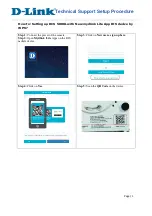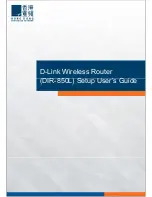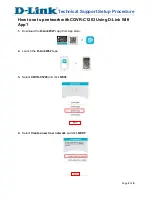
Deployment Guide
15
P
LANNING
Upgrading from a thin AP solution is also easy. However, because a thin AP makes use of an overlay tunneled
network, you sometimes have to add a local VLAN for access or use tunnels to replicate the overlay network.
However, because using VLANs rather than tunnels provides significant performance and scalability advantages,
which is clearly the recommended path.
New WLAN Deployment
In a new—or greenfield—WLAN deployment, you do not have the benefit of an existing network for testing and
analysis, which makes your job a bit more difficult. In this case, the following key questions are critical to the
proper design of your WLAN:
•
How many users will need wireless service and what applications will they use?
Determining the scope of your WLAN deployment will have a major impact on capacity and coverage. Will only
certain groups within the organization have WLAN access, or will it be rolled out across the enterprise? Will you
provide guest access to visitors, consultants, and contractors? Most WLANs support just data applications, but
many organizations are considering adding voice services. Voice support raises other design considerations that
drive the need for denser deployments of access points and different QoS (Quality of Service) settings.
•
Are there any known major sources of interference?
For example, is there a nearby cafeteria with microwave ovens? Commercial-grade microwaves are a
particularly bad source of interference. Is there a wireless telephone or video surveillance system not using
Wi-Fi? Is there a radar installation nearby? If you cannot find the answer to these questions easily, consider
employing a spectrum analysis product, such as the AirMagnet Spectrum Analyzer.
•
Are building blueprints available?
With blueprints, you can see the location of elevators, load-bearing walls, and other building characteristics
that can impact signal quality. Different materials, such as concrete walls, brick walls, cubicle walls, glass, and
elevator shafts impact signal quality differently. You can often load these blueprints into a planning or site
survey tool to make the process easier.
•
What devices need to access the WLAN?
Determine and document the full complement of devices that people will use to access the WLAN. The
performance requirements of the WLAN will depend on both the applications and the capabilities of the client
devices. For example, design engineers, architects, and doctors tend to work with bandwidth-hungry
applications, so you might need to provide greater capacity. Conversely, if it is a warehouse with a low client
density of mostly barcode scanners, a lower access point density might be suitable. Finally it is important to
consider voice, or the future use of voice. If some or all people will use VoWLAN (Voice over WLAN) devices,
that can affect how many users each access point can accommodate.
Note:
For some access point deployment guidelines, see
"Bandwidth Assumptions for Wi-Fi" on page 18
.
Summary of Contents for access point
Page 1: ...Aerohive Deployment Guide ...
Page 7: ...HiveAP Compliance Information 6 Aerohive ...
Page 13: ...Contents 12 Aerohive ...
Page 37: ...Chapter 2 The HiveAP 20 ag Platform 36 Aerohive ...
Page 71: ...Chapter 4 The HiveAP 340 Platform 70 Aerohive ...
Page 81: ...Chapter 5 The HiveAP 320 Platform 80 Aerohive ...
Page 105: ...Chapter 8 The High Capacity HiveManager Platform 104 Aerohive ...
Page 123: ...Chapter 10 Using HiveManager 122 Aerohive ...
Page 209: ...Chapter 14 Deployment Examples CLI 208 Aerohive ...
















































